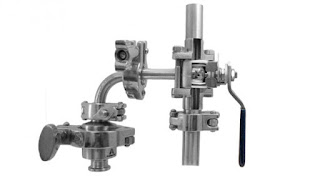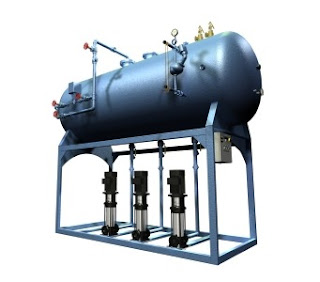 |
| Slab Gate Valve Courtesy Flowserve - Valbart |
Oil and gas production, essentially pulling raw material from the earth, has unique valve performance challenges. Extreme pressure and abrasive or erosive material are common elements of oil and gas production at the wellhead. The valves also need to tolerate the range of outdoor temperatures at the production site. Safe and reliable operation throughout these and a range of other conditions are part of the design criteria for these valves. Here are some of the specific valve variants and configurations applied in the oil and gas industry at the production wellhead.
 |
| Rising Stem Ball Valve Courtesy Flowserve - Valbart |
- Slab Gate Valve - Provides metal to metal seal and employs parallel gate and seal with a preloaded means of assuring positive upstream and downstream seal. Full port design allows for pigging.
- Expanding Gate Valve - A parallel expanding gate seals positively against both seats, which are protected from the flow medium in the open and closed positions.
- Mud Gate Valve - Designed to provide positive closure under rigorous field conditions with abrasive media.
- Adjustable Choke Valve - Designed to regulate production well flow and downstream pressure. Different trim configurations provide appropriate levels of control.
- Needle Adjustable Choke Valve - Utilizes different trim arrangement than other types to provide good flow management, abrasion resistance, erosion resistance, and reliable service over a long life with low maintenance requirements.
- Check Valve - Check valves of various types are utilized throughout practically all fluid flow operations, essentially anywhere that fluid is supposed to flow in only one direction. Oil and gas production presents some special conditions of abrasion, erosion, and pressure that call for special accommodation in design and materials of construction.


